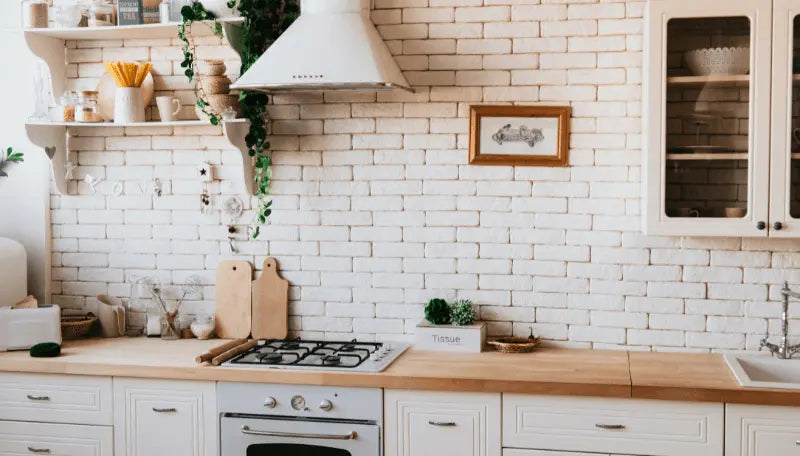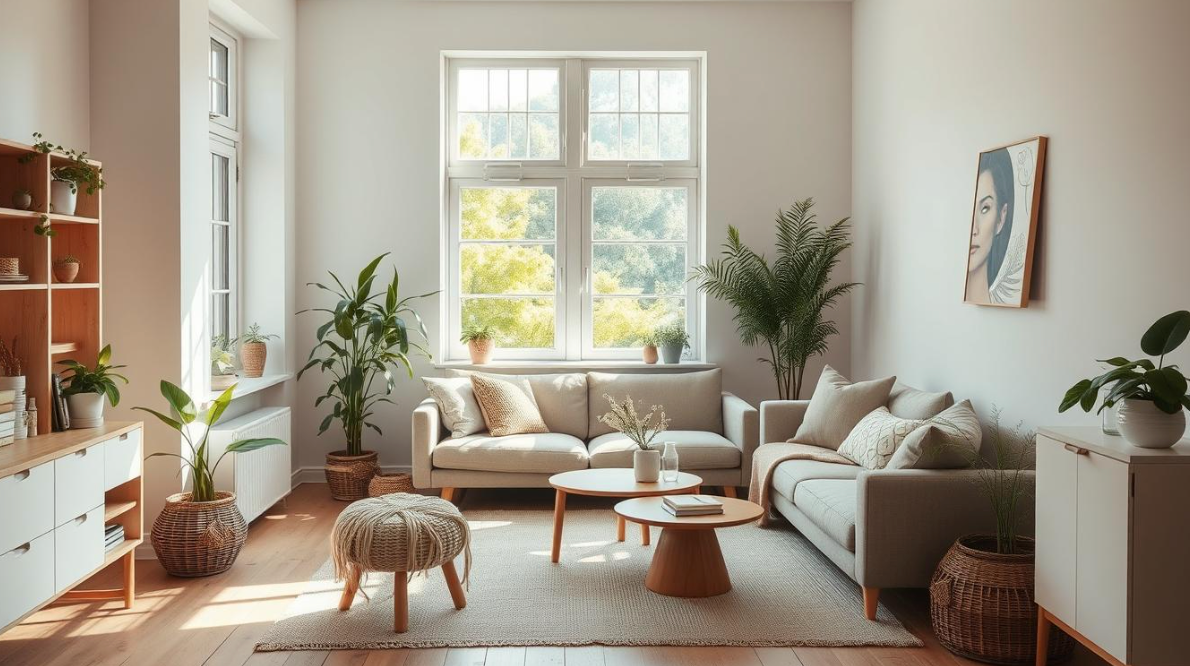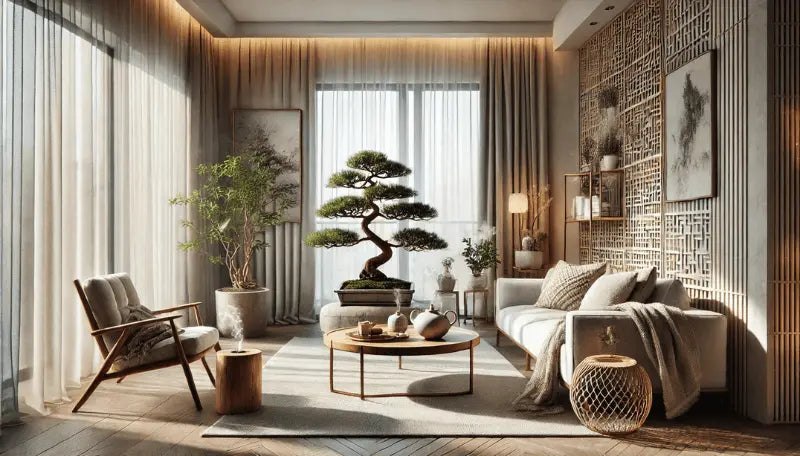The kitchen is the heart of the home, where smells, flavors, and warm conversations intertwine. It is a space where morning coffee awakens thoughts, and evening light dances on the walls, creating a home symphony of peace. In order for this interior to exude harmony, it is necessary to carefully consider the choice of wall arrangement. Will classic kitchen tiles be the best choice, or will wallpaper bring a touch of lightness and originality to the interior? How to protect kitchen walls? Or maybe it is worth choosing stone, brick or glass, which will introduce a fresh character to the kitchen? Here is a guide to materials that not only protect walls, but also give them a unique style, making the kitchen a true work of applied art.
Contents:
- Ceramic tiles – classic and durable wall arrangement
- What to use instead of ceramic tiles?
- Natural materials for kitchen walls
- Unusual solutions instead of kitchen tiles
- How to choose the best material for a kitchen wall?
Ceramic tiles – classic and durable wall arrangement
Stoneware – durability and abrasion resistance
Nothing adds solidity to a kitchen like stoneware. Its surface, although hard as a rock, can take on many forms – from a subtle imitation of wood to raw, industrial concrete. Resistant to moisture and dirt, it works perfectly where life goes on at a dynamic rhythm. It is a proven solution among classic kitchen tiles.
Glazing – aesthetics and ease of cleaning
When light dances across the shiny surfaces of the tiles, the kitchen takes on shine and lightness. Wall tiles made of this material are the quintessence of classics that combine elegance with functionality – just one wipe is enough to make them sparkle with cleanliness again. If you value an elegant wall finish, tiles will be the perfect choice.
Clinker - resistance to moisture and temperature
For lovers of natural materials, clinker is an almost timeless choice. Its warm, earthy colour brings a bit of rustic charm to the interior, and its structure provides resistance to moisture and temperature changes. It works well in both modern interiors and classic kitchens.
Terracotta - natural look and durability
Terracotta is a material that breathes history. Its surface, slightly rough and matte, introduces a note of tradition to the kitchen that never goes out of fashion. Additionally, it is extremely durable and resistant to everyday challenges. If you want an original wall finish, terracotta will be an excellent choice.

What to use instead of ceramic tiles?
Glass panels – elegance and ease of maintenance
When the kitchen wall design requires light and airy solutions, glass instead of tiles becomes the ideal choice. Laminated glass or glass panels introduce harmony and modern style, and are child's play to keep clean. Lacobel is one of the fashionable options that will work great in minimalist interiors.
Laminated board - practical and aesthetic finish
The laminated board impresses with its versatility. It can imitate marble, concrete, and even wooden lamellas, giving the kitchen an original character. This solution is especially recommended for small kitchens, where every centimeter of space counts.
Natural materials for kitchen walls
Natural stone - luxury and durability
Monumental and timeless natural stone is the choice for those who want their kitchen to exude elegance. Marble, granite or travertine will add a noble character to the interior. This is one of the natural materials that make the kitchen arrangement expressive.
Decorative brick - rustic and industrial style
Brick has a soul. It can transport you to the atmosphere of a cozy country house or a stylish loft. To make it easier to keep your kitchen walls clean, it is worth impregnating them. Brick is not only a classic choice, but also a great solution for an original wall finish.

You can find a shelf for your kitchen or pantry here
Unusual solutions instead of kitchen tiles
Although classic kitchen tiles are a popular choice, there are many alternatives that allow you to create a unique and functional space. Depending on the style of the interior and the user's preferences, you can choose modern, industrial or even artistic solutions. Here are some interesting suggestions that can replace wall tiles and give the kitchen an original character.
Mosaic - an eye-catching accent above the countertop
Mosaic is one of the most decorative solutions that can give your kitchen an individual style. It consists of small ceramic, glass, metal or stone elements that create extremely effective patterns.
Why choose mosaic?
- It allows for creative compositions – from classic geometric patterns to artistic floral motifs or abstract mosaics inspired by art.
- It fits perfectly with both traditional and modern interiors.
- It can function as an original finishing touch to the wall above the countertop, constituting the main decorative accent in the kitchen.
- It is resistant to moisture, dirt and high temperatures.
Design tip: Mosaics in shades of black and white will work great in modern kitchens, while in rustic interiors it is worth choosing warm colours such as beige, brown and gold.

Architectural concrete – a raw and modern look
Architectural concrete is a material that has gained immense popularity in modern kitchens and loft interiors in recent years. Its raw aesthetics blend perfectly with wood, laminate and laminated glass, creating a coherent and elegant decor.
Advantages of architectural concrete in the kitchen:
- It is exceptionally durable and resistant to mechanical damage and moisture.
- Creates a minimalist and industrial interior that matches modern trends.
- It goes well with metal accessories, steel household appliances and raw kitchen furniture.
- It can be used both as a wall and as a decorative element, e.g. in the form of panels or a kitchen island.
Design tip: To warm up the raw look of concrete, combine it with wooden shelves or colorful accessories, such as copper accents.

Stainless steel sheet metal – industrial style and hygiene
Stainless steel is a material often used in professional catering kitchens, but it is also increasingly appearing in home arrangements. It gives the interior a modern, yet raw look that fits perfectly with industrial and minimalist styles.
Advantages of stainless steel in the kitchen:
- It is exceptionally hygienic – easy to clean, resistant to moisture and bacteria.
- It suits modern kitchens, especially those inspired by the loft style.
- It gives the interior a professional character – a solution used in restaurant kitchens.
- It can be used on an entire wall or just in the work area above the countertop.
Design tip: Stainless steel goes best with concrete, glass and black or wooden furniture fronts.
Vinyl Wallpaper - Patterns and Ease of Cleaning
If you want to refresh your kitchen quickly and effectively, vinyl wallpaper or photo wallpaper will be a great solution. Modern kitchen wallpapers are resistant to moisture and dirt, so they can be used even near the stove or sink.
Why is it worth choosing vinyl wallpaper?
- It is easy to install and can be replaced if necessary.
- Available in a wide range of designs – from classic floral motifs, through modern geometric shapes, to imitations of concrete, marble or brick.
- It can be painted with protective paint or varnished for extra durability.
- Perfect for small kitchens because it can optically enlarge the space.
Design tip: A photo wallpaper with a city panorama or landscape motif can add depth and a modern character to the interior.
Decorative plaster - structural wall finishing
Decorative plaster and structural plaster are a great alternative to traditional wall coverings. They allow you to achieve an interesting visual effect and unique texture, thanks to which the kitchen takes on a unique character.
Advantages of decorative plaster:
- Creates decorative walls that look like raw concrete, stone or old brick.
- It can be used on the entire wall surface or only as an accent in a selected place.
- It is resistant to moisture and can be additionally protected with a special impregnation.
- It suits both modern and classic kitchens.
Design tip: Combining structural plaster with delicate LED lighting can highlight the unique texture of the wall and give the interior an exclusive character.

How to choose the best material for a kitchen wall?
What should you remember when choosing a kitchen wall arrangement?
- Resistance to moisture and dirt – the kitchen is a space exposed to greasy stains, high temperatures and moisture, so choose materials that are easy to clean.
- Matching the interior style – modern ones go well with laminated glass, stainless steel or concrete, while brick or terracotta will work well in traditional arrangements.
- Easy to install and maintain – if you do not plan on frequent renovations, choose durable materials that do not require frequent impregnation or specialist care.
What to choose instead of ceramic tiles?
If you are wondering how to protect kitchen walls and create an effective arrangement at the same time, you have many options. Glass instead of tiles is a great choice for modern spaces, mosaic allows for creative compositions, and vinyl wallpaper is a solution that you can easily change according to trends.
Every kitchen is different, so it is worth choosing the wall material according to your own needs and interior style. Regardless of the choice, a well-designed and functional kitchen wall arrangement will make it not only a place for cooking, but also a unique space full of character and style.
Summary
The choice of kitchen design is a key element that affects both the aesthetics and functionality of the interior. Depending on your preferences and kitchen style, you can choose classic kitchen tiles, modern glass panels, elegant natural stone, as well as more unusual solutions, such as architectural concrete or vinyl wallpaper.
If you care about durability and resistance to moisture, ceramic tiles, stoneware or glazed tiles are a proven choice. For lovers of austere style, concrete, decorative brick or stainless steel sheet metal will be ideal. However, if you are looking for an easy way to quickly transform your interior, it is worth considering photo wallpaper or decorative plaster.






